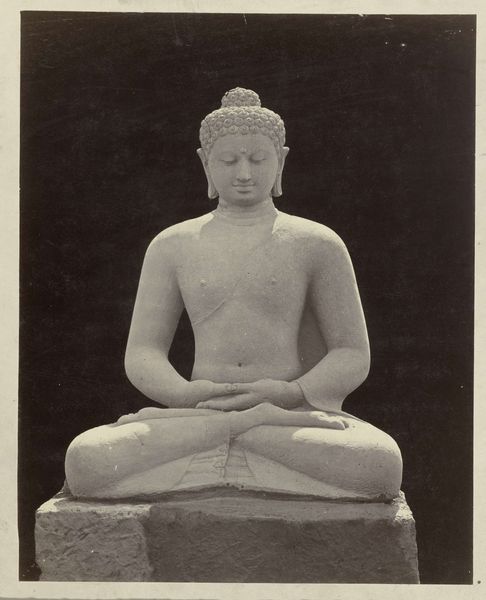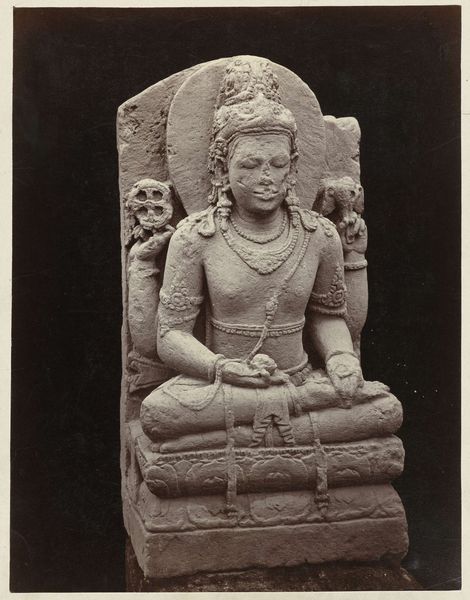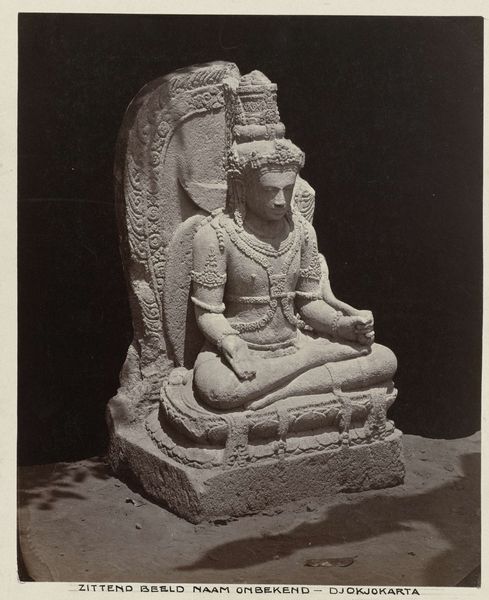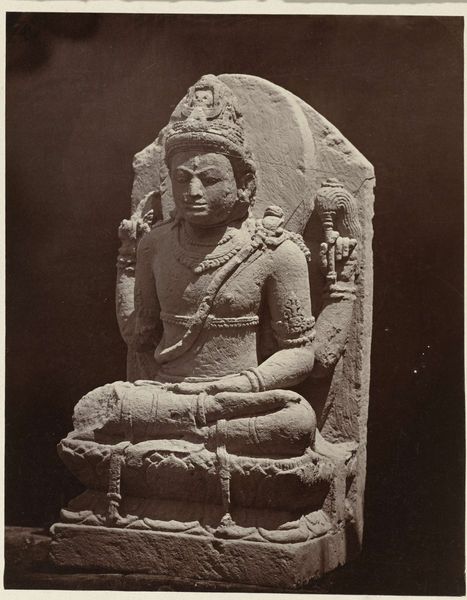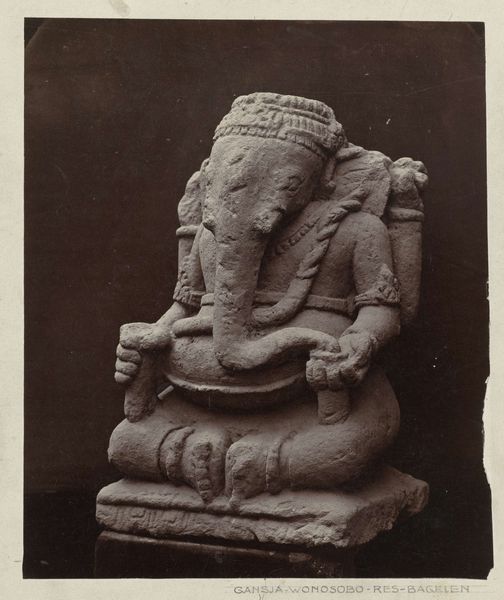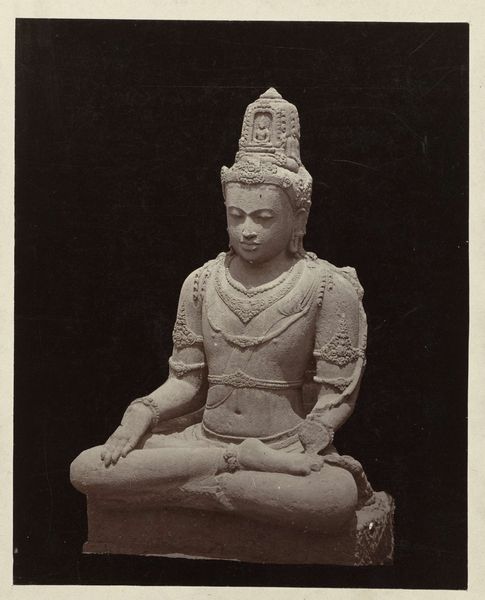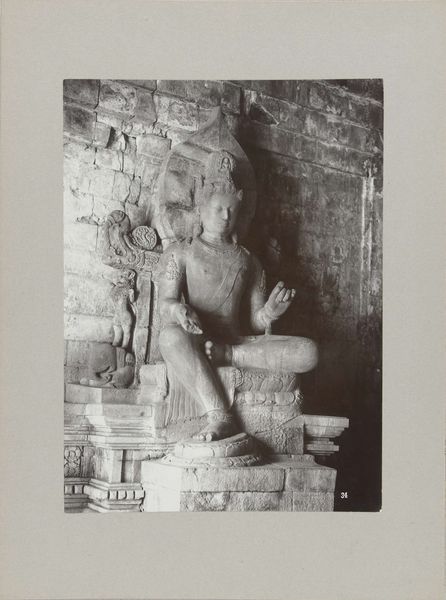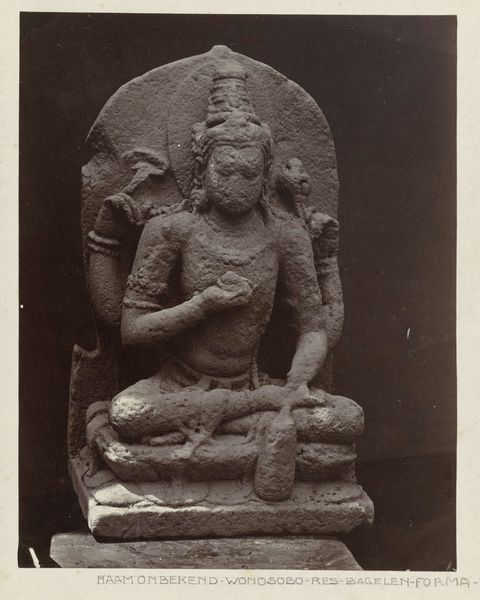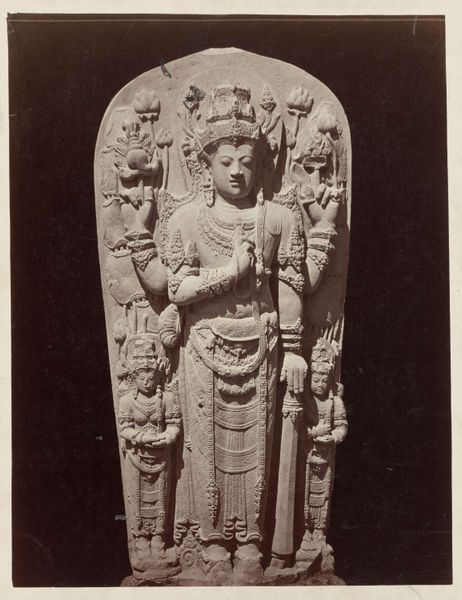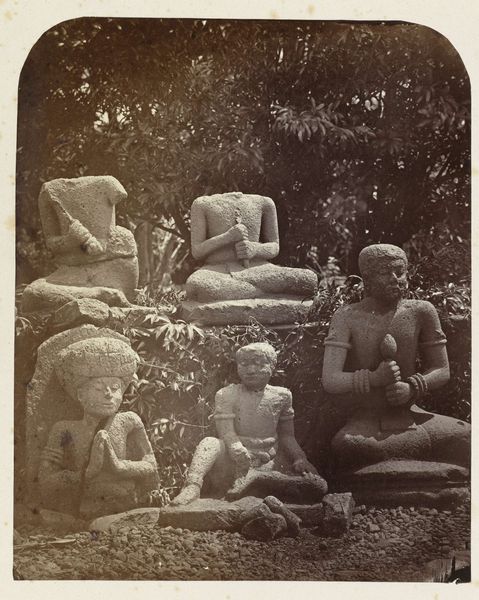
Monk displaying the varada mudra, Residential house. Kediri, Kediri district, East Java province, 13th - 14th century. Possibly 1866 - 1867
0:00
0:00
photography, sculpture
#
portrait
#
sculpture
#
asian-art
#
figuration
#
photography
#
ancient-mediterranean
#
sculpture
Dimensions: height 200 mm, width 115 mm
Copyright: Rijks Museum: Open Domain
Curator: Here we have a photograph titled “Monk displaying the varada mudra” taken by Isidore Kinsbergen, likely between 1866 and 1867 in Kediri, East Java. The subject is a stone sculpture. Editor: Immediately, the monochrome palette projects a sense of timelessness, almost like witnessing a relic through the ages. The pose strikes me as both serene and grounded. Curator: Kinsbergen’s photographic work provides valuable insight into 19th-century colonial Indonesia, offering perspectives on religion, culture, and local craftsmanship. We can examine the photograph's power to freeze this monk's practice, positioning Asian art into the Western gaze, one that both observes and somewhat objectifies it. Editor: Absolutely. I’m particularly drawn to the details in the carving. The hand gesture or 'mudra', for example, speaks volumes about the intentions of the monk. And consider the stone: what quarry did it come from, who were the sculptors? Understanding that production process allows us to value it, not just as a religious figure but as material culture that holds within it the history of labor, extraction, and skill. Curator: Yes, the photograph becomes a document for understanding religious expression and artistic traditions intersecting with a complex social history of that period, challenging us to analyze how images themselves shaped colonial knowledge. Editor: Kinsbergen’s photographic craft plays a crucial role too. His method of documenting illuminates the sculpture and, indeed, the act of sculpting. It provides, as well, a moment to reflect on our modes of consumption and our access to understanding material realities across historical divides. Curator: Indeed. This image is an intersection. It highlights not only a single religious figure, but the intertwined social, political and cultural forces that influence the creation, preservation, and perception of the art objects themselves. Editor: It all begs us to be considerate of the social narratives, both captured and omitted in its presentation, and about how it reframes our relationship to the sculpture itself. It pushes me to recognize and be respectful of labor in art history.
Comments
No comments
Be the first to comment and join the conversation on the ultimate creative platform.
